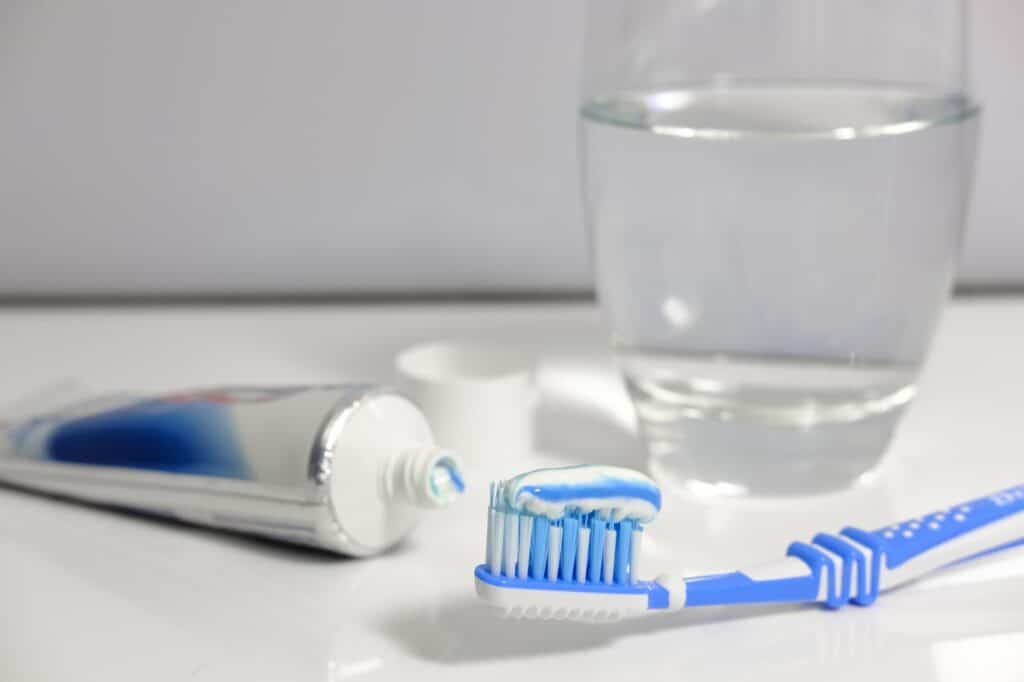Fluoride is a hot topic in the 21st Century — many have debated on whether we consume too much or too little. In order to form an opinion, we have to understand what exactly Fluoride is and how it helps our teeth.
We will cover some basic questions about Fluoride:
- What is it?
- Where do I find it?
- What are the benefits?
- Are there any cons?
In order to better understand what your dentist is talking about.
What Is Fluoride?
Scientifically speaking, Fluoride is an organic or inorganic compound of fluorine bonded with another element or group, commonly a salt or member of an alkyl group.
In layman’s terms, Fluoride is a mineral in our bones and teeth that can also be found in other organic substances such as:
- Food
- Water
- Air
- Plants
- Soil
- Rock
Dentists use Fluoride in order to prevent tooth decay. When plaque builds up on our teeth, we start to lose certain minerals within our enamel layers. Fluoride aids in remineralizing these layers, ultimately reversing the effects of natural tooth decay.

Where Is Fluoride Placed?
Toothpaste
According to the Fluoride Action Network, over 95% of toothpaste now contains Fluoride. Commonly they contain anywhere from 1,000 to 1,500 ppm (parts per million — which can also be expressed as milligrams per liter). It is recommended that children only use a “pea-sized” amount of fluoride toothpaste due to the likelihood that some might get swallowed.
Mouth Rinse
If you need extra help in preventing cavities, fluoride mouth rinses protect teeth from acid damage produced by bacterial plaque. Normal mouthwashes still freshen your breath and clean out food particles, but they do not strengthen enamel.
Gels and Supplements
For those that are high-risk for tooth decay, a dentist may prescribe gels or supplements. If applied professionally, these gels can contain up to 12,000 ppm of fluoride.
Researchers found that using a fluoride gel will result in a 20% reduction of tooth decay, whether it be applied to baby teeth or those of a fully grown adult.
Tap Water
Fluoride has been added to most drinking water since the 1940s. This is because early scientists observed the relationship between tooth decay in children and organic fluoride in the water systems.
Toothaches and extractions were extremely common in this time period, so the United States took notice of the new research. The city of Grand Rapids, Michigan, was the first to add fluoride to its water system. Eventually, hundreds of cities participated, and water fluoridation was named one of ten great public health achievements.

Currently, the United States provides fluoride in 73% of its water systems. Fluoride levels are kept at a safe measurement by the Environmental Protection Agency.
Fluoride Benefits
Overall, Fluoride is great for teeth because it helps:
- Remineralize weakened enamel layers
- Slow the process of mineral loss
- Reverse early tooth decay
- Prevent the growth of harmful bacteria
- Decrease cavities and their severity
- Lessen tooth pain
Children
Believe it or not, children are the most vulnerable to tooth decay. It is extremely important for children ages six months to 16 to intake fluoride because both baby teeth and permanent teeth form in this time span. In children younger than 8 years old, fluoride helps strengthen the developing teeth which lay beneath baby teeth.

There is no set dosage of fluoride that a child needs, however, if a child lives in an area where there is no fluoride water system, they may need supplements.
Adults
Adults benefit heavily from topical fluorides — toothpaste, mouth rinses, and treatments.

If any of these conditions apply to you:
- Dry mouth
- Gum disease
- Presence of crowns or braces
- History of frequent cavities
You may be at a higher risk for tooth decay — ask your dentist about fluoride options.
Possible Side Effects
Dental Fluorosis
Dental Fluorosis occurs when we intake too much fluoride during the development of our teeth. This usually happens when children under seven years old use fluoride supplements when they already live in an area with a heavily fluoridated water supply. Less commonly, this may happen if a child continuously eats fluoride toothpaste.
When spotted, dental fluorosis looks like thin white lines or specks on the surface of the teeth. Severe fluorosis is rare, but it may lead to discolored or pitted enamel.
Skeletal Fluorosis
Instead of the teeth, Skeletal Fluorosis harbors in our bones. It is a chronic metabolic bone and joint disease that can alter the growth and resorption of bone tissue.
This type of fluorosis is caused by long-term exposure to large amounts of fluoride, usually through drinking water. Excessive fluoride in water is rare, but it could be the result of geologic deposits of fluoride — such is the case in some areas of Africa and Asia — or accidental contamination from fires/explosions.

Although the placement of fluoride may be debated at the dinner table, we can see from this research that it is important in both developing and permanent teeth. The pros tend to outweigh the cons when we account for the rarity of such overexposure — in most cases, an underexposure to fluoride does more harm. Now that we covered the functions, benefits, and risks of fluoride use, you are ready to ask your dentist what dosage is right for you.

